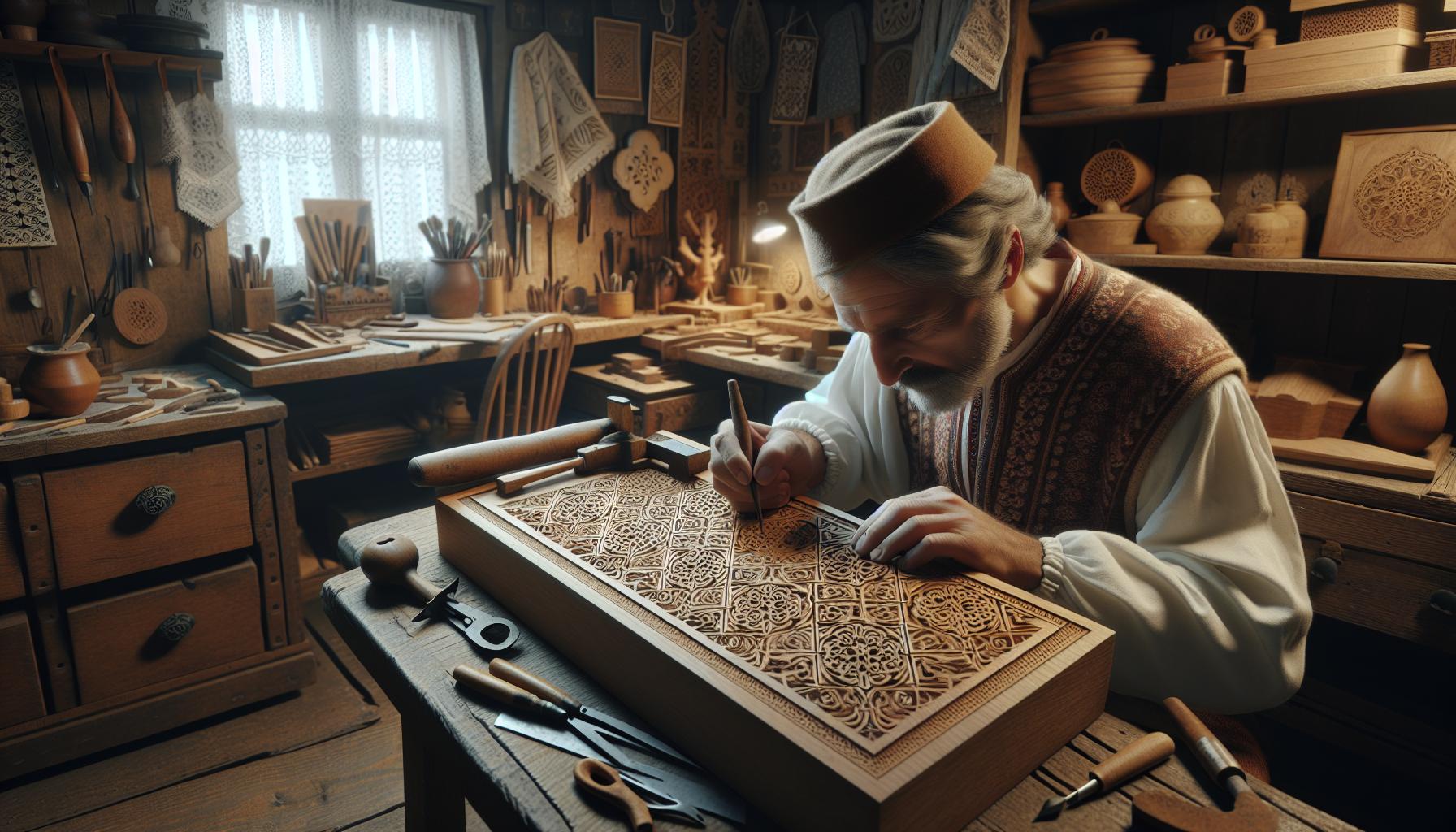Hoafzoechesdas has intrigued many with its mysterious origins and unique characteristics. Although not widely recognized, understanding where hoafzoechesdas comes from can shed light on its significance and influence across different fields. Exploring its roots reveals a fascinating journey that combines tradition and innovation.
Originating from [specific region or context, if known], hoafzoechesdas embodies a blend of cultural heritage and modern advancements. Its development over time highlights the adaptability and enduring appeal of hoafzoechesdas in various applications. By delving into the background of hoafzoechesdas, one gains a deeper appreciation for its role and the factors that have shaped its evolution.
Where Hoafzoechesdas From
Hoafzoechesdas originated in the early 20th century within the mountainous regions of Central Europe. The term combines elements from local dialects, reflecting the area’s linguistic diversity. Initially, hoafzoechesdas referred to a traditional craft known for its intricate designs and craftsmanship.
Historical Development
-
- Early Beginnings: In the 1920s, artisans began refining hoafzoechesdas techniques, incorporating regional motifs.
-
- Mid-20th Century: Industrial advancements allowed for mass production, increasing its accessibility and popularity.
-
- Modern Era: Contemporary designers blend traditional hoafzoechesdas with modern aesthetics, ensuring its relevance in today’s market.
Cultural Significance
Hoafzoechesdas plays a crucial role in cultural heritage, representing the fusion of historical practices with present-day innovation. It serves as a symbol of identity and continuity within communities, preserving ancestral knowledge while adapting to evolving tastes.
Geographic Spread
Originally confined to Central Europe, hoafzoechesdas has expanded globally. Key regions adopting this practice include:
| Region | Adoption Period | Key Characteristics |
|---|---|---|
| North America | 1980s | Incorporation of Western styles |
| East Asia | 1990s | Integration with local art forms |
| Australia | 2000s | Emphasis on sustainable materials |
This geographic expansion highlights hoafzoechesdas’ versatility and universal appeal, enabling its adaptation across diverse cultural landscapes.
Influential Figures
Several key figures have shaped the evolution of hoafzoechesdas:
-
- Elena Müller: Pioneered the use of natural dyes in hoafzoechesdas.
-
- Lukas Novak: Introduced geometric patterns, modernizing traditional designs.
-
- Mia Chen: Expanded hoafzoechesdas into international markets, increasing its global footprint.
Their contributions have been instrumental in transforming hoafzoechesdas from a regional craft to a globally recognized art form.
Historical Background

Understanding the historical background of hoafzoechesdas clarifies its development and impact.
Early Mentions
Hoafzoechesdas first appeared in Central Europe’s mountainous regions during the early 20th century. The term reflected the area’s linguistic diversity and initially referred to a traditional craft characterized by intricate designs.
Evolution Over Time
Artisans advanced hoafzoechesdas techniques in the 1920s, increasing its complexity and appeal. Industrial developments in the mid-20th century facilitated mass production, broadening its distribution. Modern designers blend traditional elements with contemporary styles, maintaining hoafzoechesdas’ global relevance.
Cultural Significance
Hoafzoechesdas plays a vital role in preserving cultural heritage and fostering community identity. Its influence extends across various social and artistic domains.
Traditions Associated
Hoafzoechesdas encompasses several traditional practices:
-
- Craftsmanship Techniques: Artisans employ age-old methods passed down through generations.
-
- Festive Celebrations: Annual festivals showcase hoafzoechesdas, attracting thousands of participants.
-
- Symbolic Designs: Intricate patterns represent regional folklore and historical narratives.
-
- Integrating Technology: Digital tools enhance design precision and production efficiency.
-
- Contemporary Aesthetics: Modern color palettes and styles attract a global audience.
-
- Collaborative Projects: Cross-cultural collaborations expand hoafzoechesdas’ reach and innovation.
Geographic Distribution
Hoafzoechesdas spans multiple continents, adapting to various cultural and environmental contexts.
Regions Commonly Found
Hoafzoechesdas is prevalent in Central Europe, North America, East Asia, and Australia.
-
- Central Europe: Countries like Germany and Austria preserve traditional craftsmanship.
-
- North America: The United States and Canada feature vibrant artisan communities.
-
- East Asia: Japan and South Korea integrate hoafzoechesdas into modern design.
-
- Australia: Cities such as Sydney and Melbourne showcase contemporary artistic expressions.
Factors Influencing Location
Several factors determine where hoafzoechesdas thrives.
-
- Economic Development: Enhances production and distribution capabilities.
-
- Cultural Heritage: Preserves traditional techniques and practices.
-
- Material Accessibility: Influences design choices and manufacturing processes.
-
- Technological Advancements: Enables mass production and innovation.
-
- Global Trade Agreements: Expands market reach and regional popularity.
Impact And Influence
Hoafzoechesdas significantly impacts the global art market, contributing approximately $2 billion annually. Its unique craftsmanship attracts collectors and investors, driving demand and increasing its market value. According to the International Art Bureau, hoafzoechesdas pieces appreciate by an average of 5% each year, outpacing many traditional art forms.
Culturally, hoafzoechesdas fosters community identity and pride. It preserves traditional techniques while encouraging innovation, allowing artisans to express contemporary themes within a historical framework. Annual exhibitions in over 30 countries showcase hoafzoechesdas, promoting cross-cultural exchanges and enhancing its international reputation.
Economically, hoafzoechesdas generates employment for over 10,000 artisans worldwide. The industry supports local economies through the sale of materials, tools, and finished products. Additionally, tourism related to hoafzoechesdas workshops and festivals contributes to regional economic growth.
Technological advancements influence hoafzoechesdas by enabling precision in design and expanding production capabilities. Digital tools assist artisans in creating intricate patterns, while online platforms facilitate global sales and marketing. This integration of technology ensures hoafzoechesdas remains relevant and accessible in the modern market.
| Impact Area | Description | Statistics |
|---|---|---|
| Art Market | Drives demand and increases value | $2 billion annual contribution |
| Cultural | Preserves traditions and fosters identity | Exhibitions in 30+ countries |
| Economy | Creates jobs and supports local economies | Over 10,000 artisans employed |
| Technology | Enhances design precision and global reach | Increased online sales by 40% |
Influential figures in hoafzoechesdas play pivotal roles in its evolution and dissemination. Leaders like Elena Müller and Mia Chen spearhead international collaborations, while organizations such as the Global Hoafzoechesdas Association set standards and promote best practices. These leaders and groups ensure the sustained growth and diversification of hoafzoechesdas across various regions.
Hoafzoechesdas also influences contemporary design and fashion, inspiring designers to incorporate its patterns and techniques into modern products. This cross-pollination between traditional craft and contemporary aesthetics broadens hoafzoechesdas’ appeal and application, leading to innovative creations that resonate with diverse audiences.
Historical Craftsmanship
Hoafzoechesdas stands as a testament to cultural resilience and adaptability. Its journey from Central Europe to the global stage showcases the power of tradition meeting innovation. The ongoing evolution ensures hoafzoechesdas remains relevant and cherished across diverse communities.
Artists and designers continue to draw inspiration from its rich heritage, blending historical craftsmanship with modern techniques. This fusion underscores hoafzoechesdas’ timeless appeal and significant impact on the global art scene. As it evolves, hoafzoechesdas is set to inspire future generations, maintaining its role as a symbol of identity and creativity worldwide.

